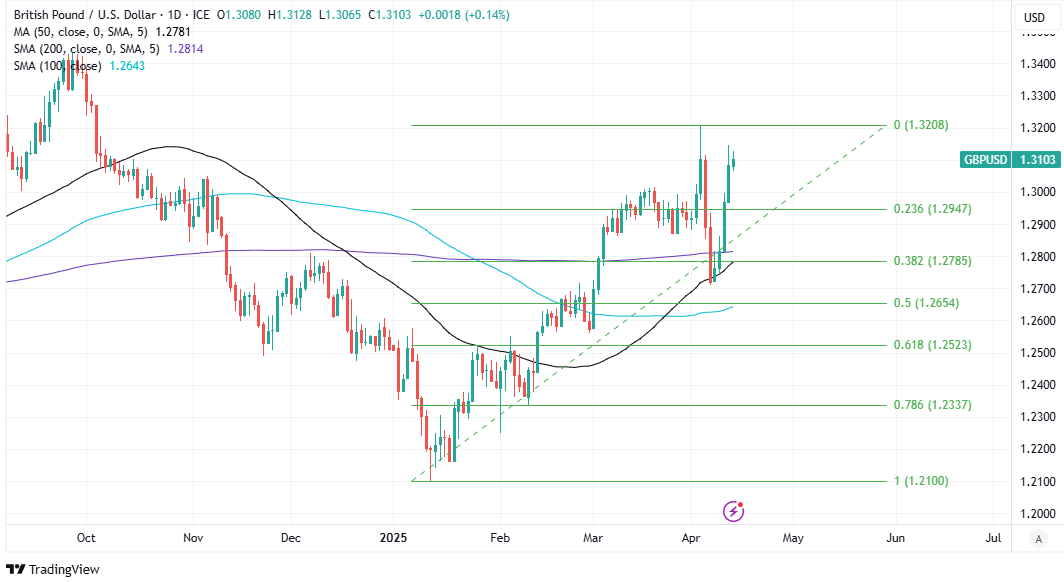
Image © Adobe Images
The Pound to Dollar exchange rate is trading buoyantly near six-month highs and should remain well-supported above 1.2947, with scope for further possible upside during a week ahead that potentially risks seeing exploitative mythologies of a poisonous kind taking hold in US asset markets.
GBP/USD rallied back from early losses before recovering above the 1.30 handle last week as US currency, bond and stock markets unravelled amid an escalating trade conflict between Washington and Beijing, and a souring of market sentiment toward all things American.
However, more than anything else, at least some of the decline in US Treasuries might have been more a symptom of FX interventions aimed at tempering the losses of the Chinese Renminbi, which is under pressure against most currencies in the China Foreign Exchange Trade System Index.
The coincidence of souring of sentiment toward America and weakness in the Treasury market induced by FX interventions from Beijing is potentially a big problem for US asset markets, however, because it risks conferring perceived credibility and effect upon exploitative mythologies of a poisonous kind.
“The initial US Treasury sell-off may have been triggered by technical factors and – perhaps – even the Chinese government; however, long-term fundamentals also point to higher US government bond yields and a lower dollar, in our view,” says Holger Schmieding, chief economist at Berenberg.
Above: Pound to Dollar rate shown at daily intervals with Fibonacci retracements highlighting possible areas of technical support. Click for closer inspection.
It wasn’t just commentators at Berenberg who saw last week’s Treasury sell-off offering support to their view that “long-term fundamentals also point to higher US government bond yields and a lower dollar,” as the team at Deutsche Bank both concurred and also went a step further.
“The challenge for the USD and the US bond market is not just de-dollarization. It is that the twin deficit position requires ongoing funding from foreigners to be sustained. By extension, foreign investor risk sentiment becomes all the more important,” says George Saravelos, head of FX research at Deutsche Bank.
“It is an oft-repeated phrase that a twin deficit country is dependent on the "kindness of strangers". This now applies to the US, but by extension it will make the stability of US markets all the more dependent on non-confrontational foreign and economic policy to ensure their funding,” he adds.
Any widespread peddling or parroting of narratives suggesting US “bond and currency market stability,” is now dependent upon “non-confrontational foreign and economic policy,” would risk handing a small but influential subset of market participants coercive influence and control over US fiscal, foreign and trade policies.
Above: Pound to Dollar rate shown at weekly intervals with Fibonacci retracements highlighting possible areas of technical resistance. Click for closer inspection.
However, there are also numerous legitimate arguments for why the US Dollar does remain vulnerable and could easily unravel further, not least the still-outrageous valuations prevailing across US equity markets, which are indefensible in the face of current US policies on trade and inflation.
With the White House having pledged to curtail inflation, its tariffs are certain to reduce profits and margins across corporate America in the near-to-medium term, which demands lower stock prices or else multiples-based valuations will rise, and the downward adjustment becomes even larger if and when valuations have to fall.
This is bearish for the US Dollar because as a rule of thumb, international equity investors rarely maintain anything more than partial hedges of their foreign exchange exposure, and would be severely bearish for the greenback if simultaneous sell-offs in equities and FX become mutually reinforcing and self-perpetuating.
Added to this, the downward pressure on the trade-weighted Chinese Renminbi is another risk to the greenback because of the high correlation, if not quasi peg, that exists between the two of them. And market-closing tariffs on imports from China likely mean the currency will remain under pressure for a while yet.
“The USD remains very heavy and it feels like it is now taking on a life of its own as it ignores gyrations in other asset classes and correlations, which smacks of large allocation shifts. It is very hard to think of a headline that will turn this around as further US policy flip flopping will only exacerbate the problem,” says Laoise Ni Thighearnaigh, a trader on the FX desk at JPMorgan, in a Friday commentary.


